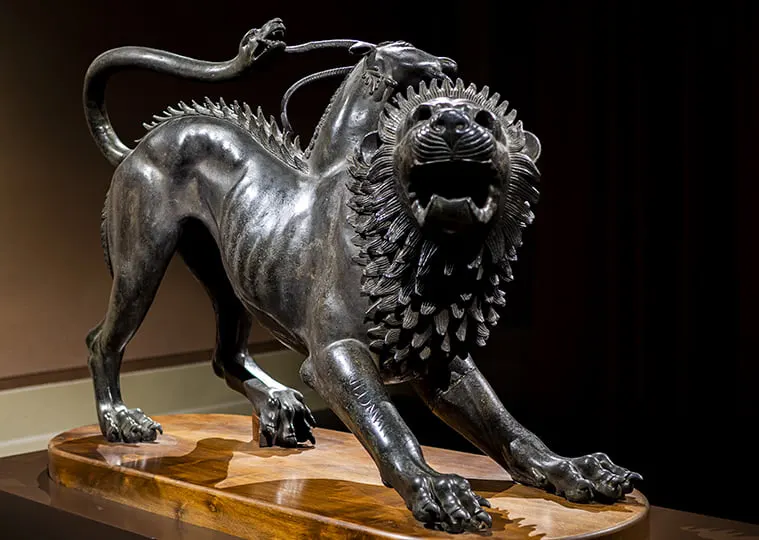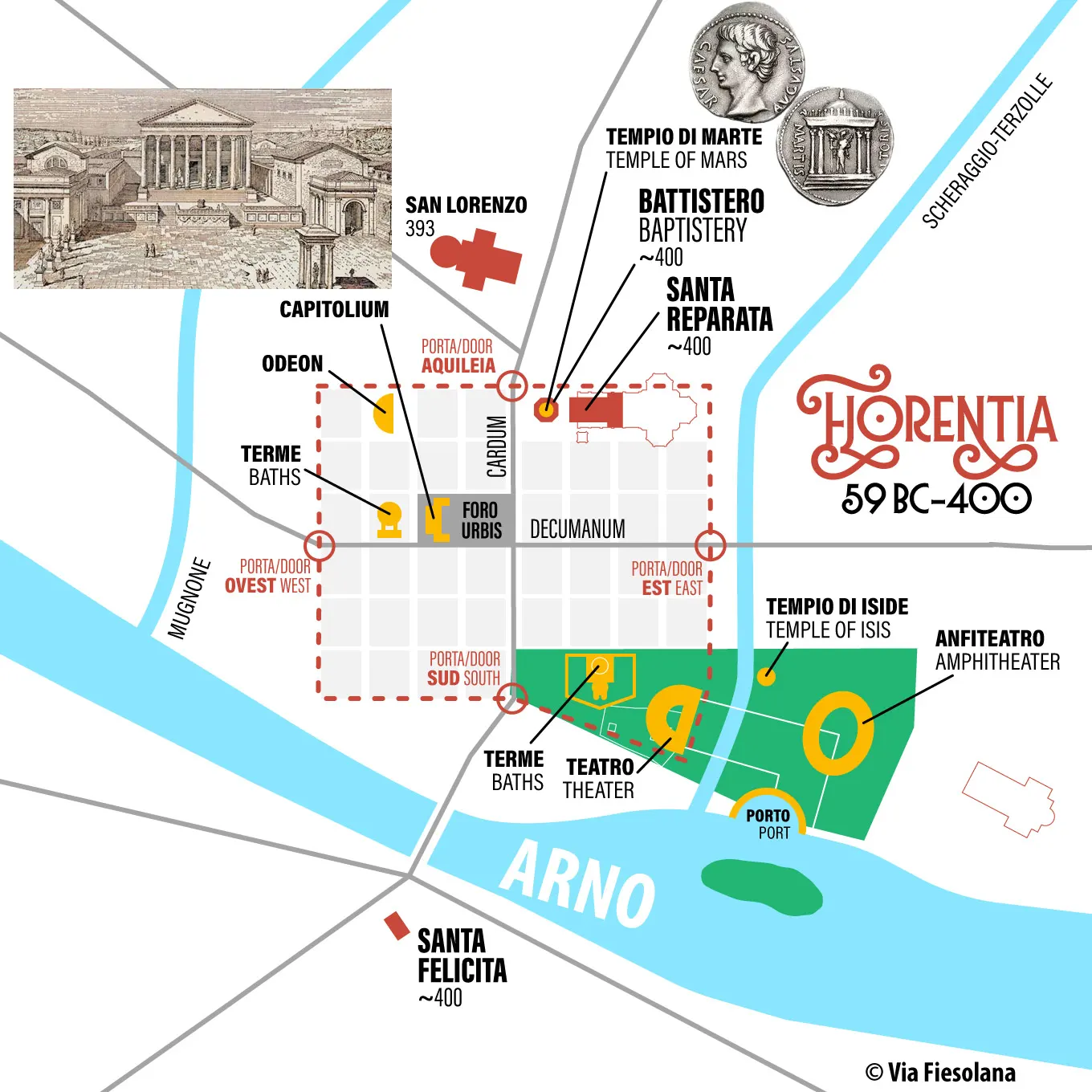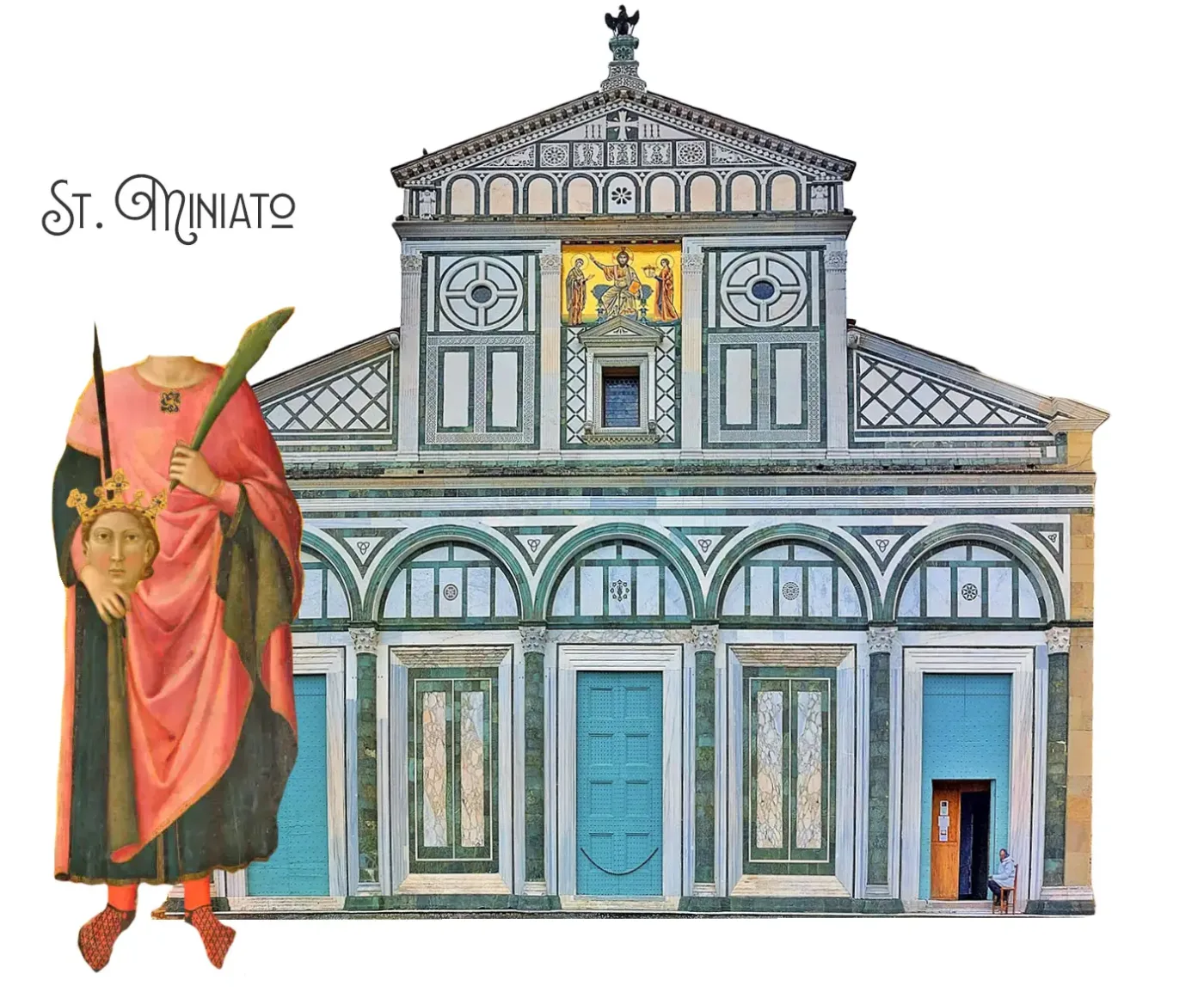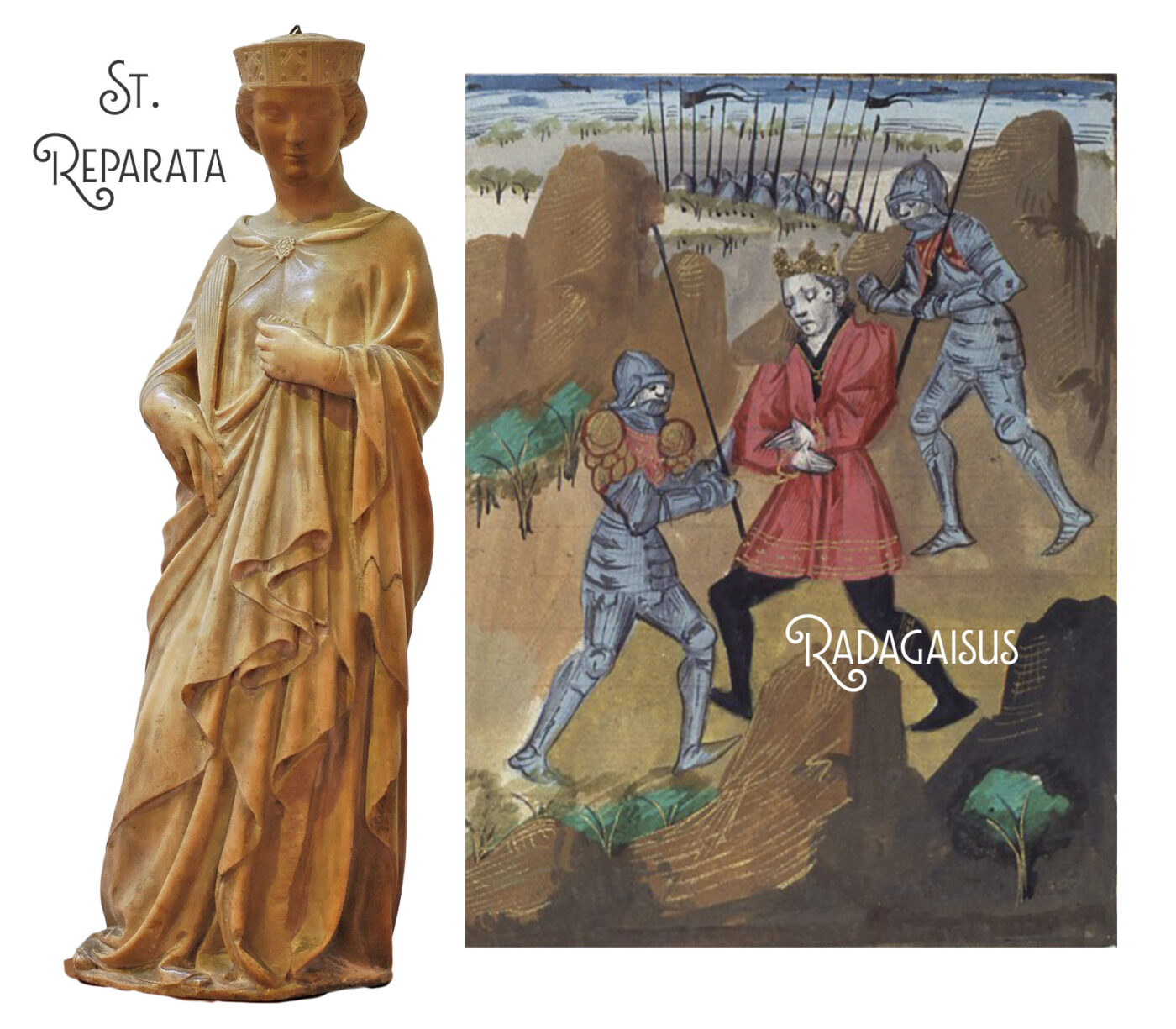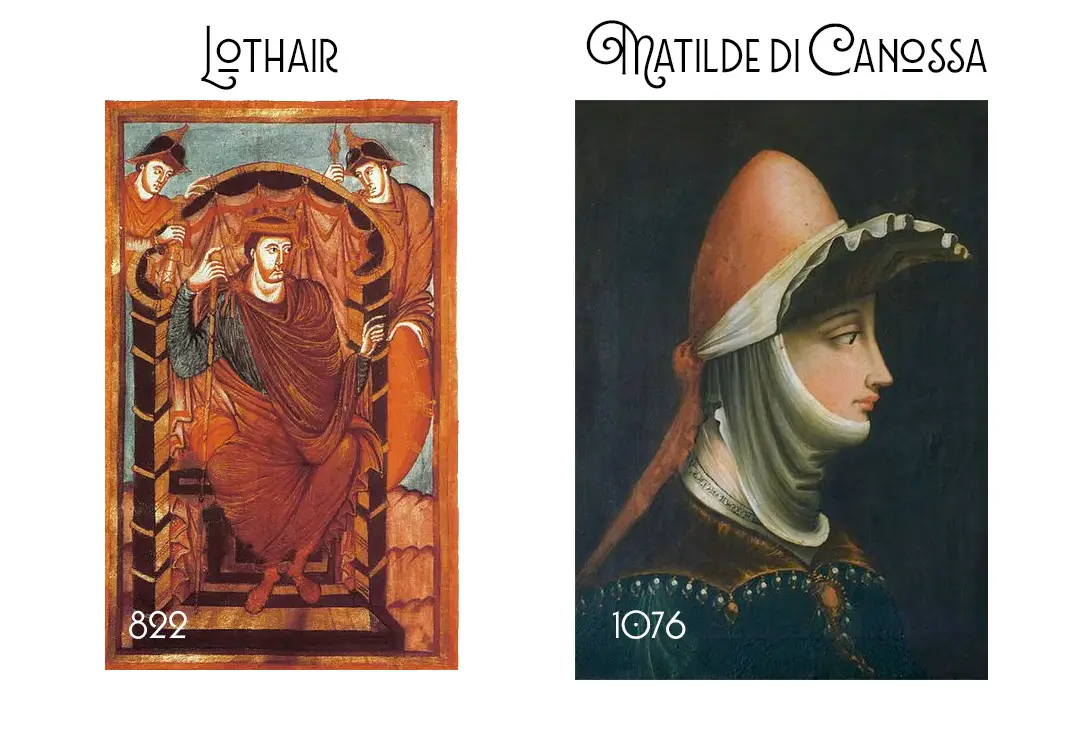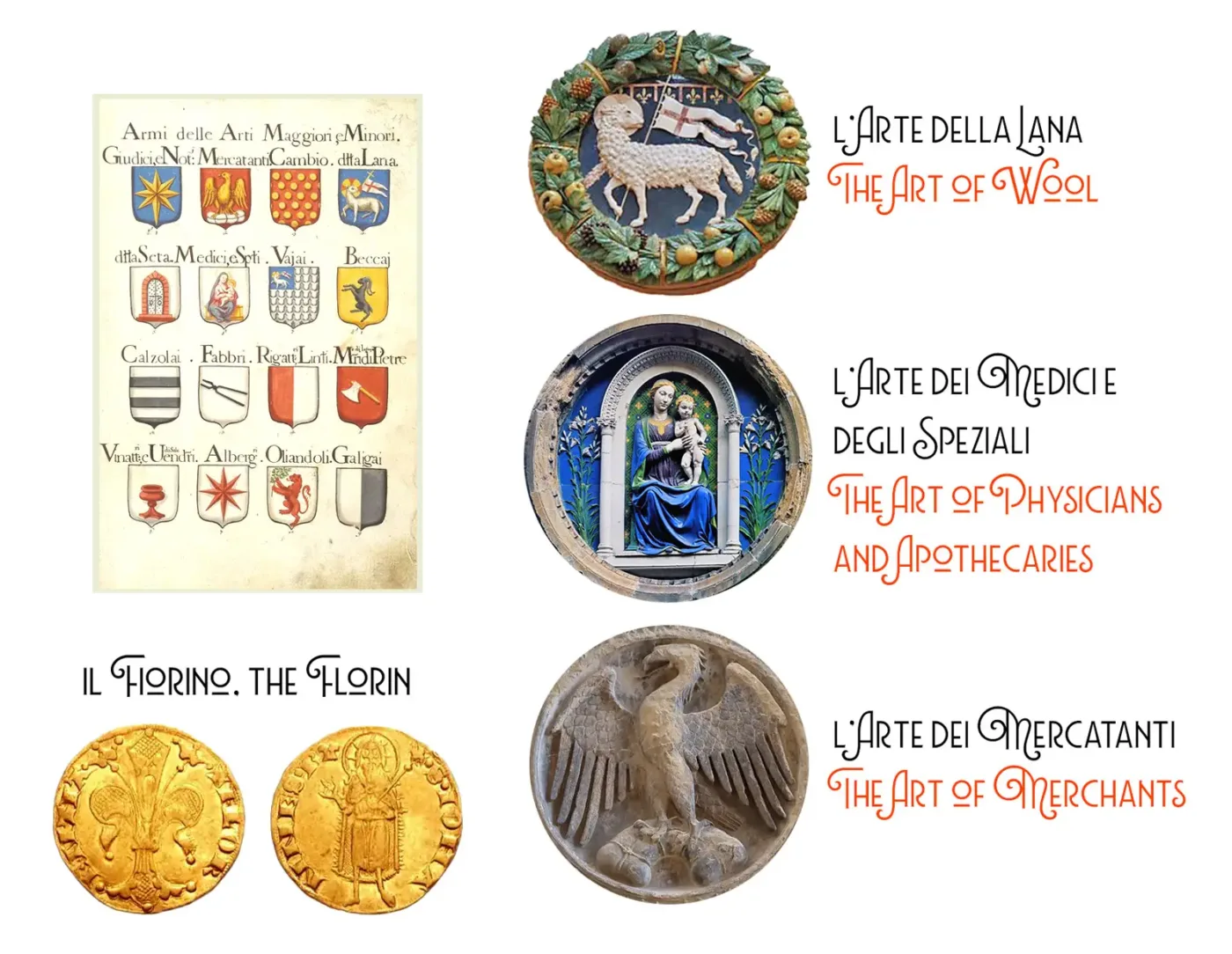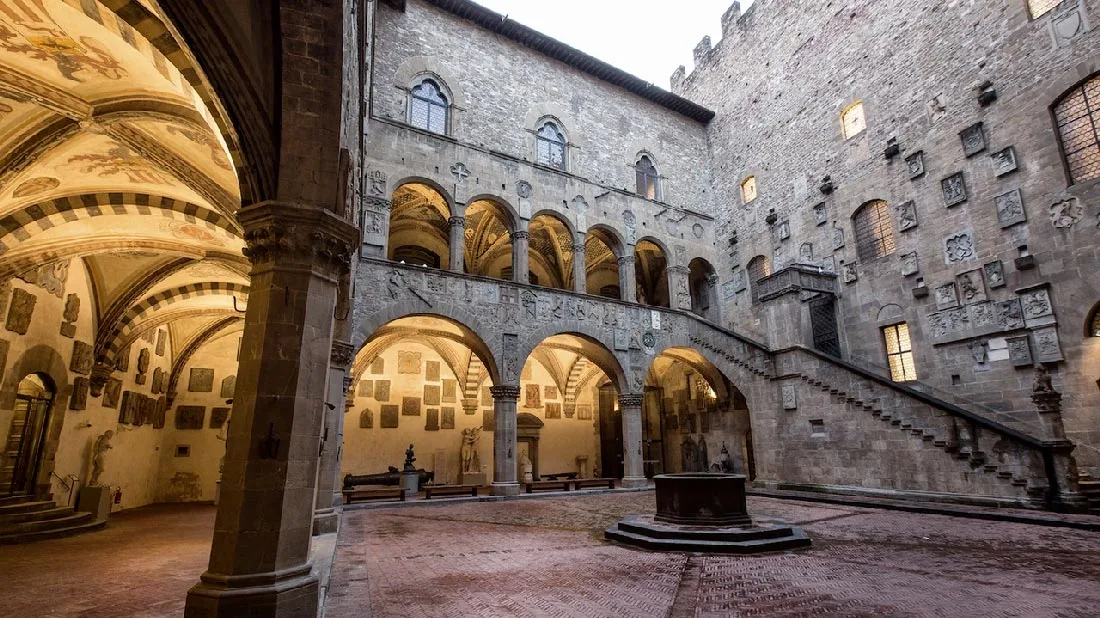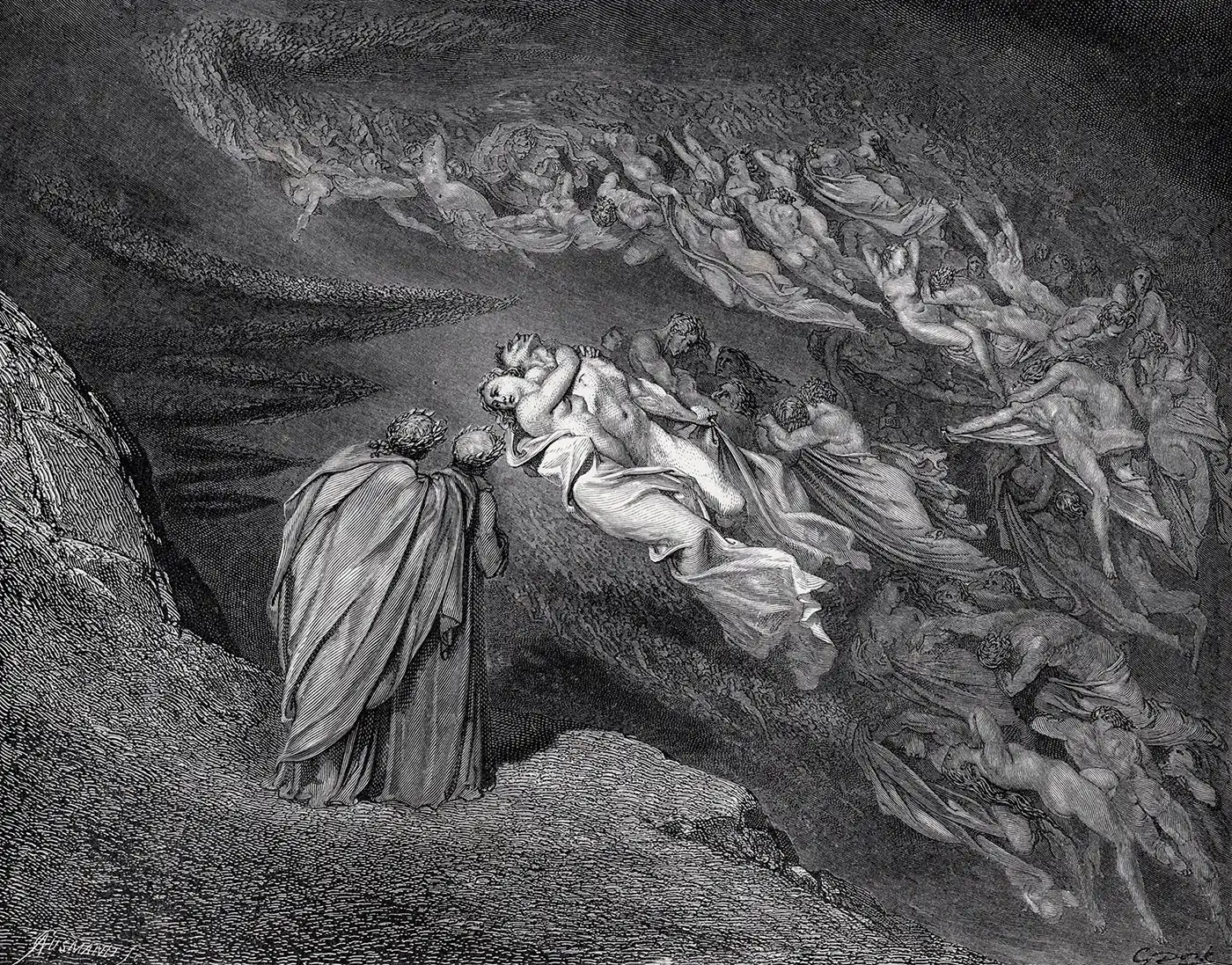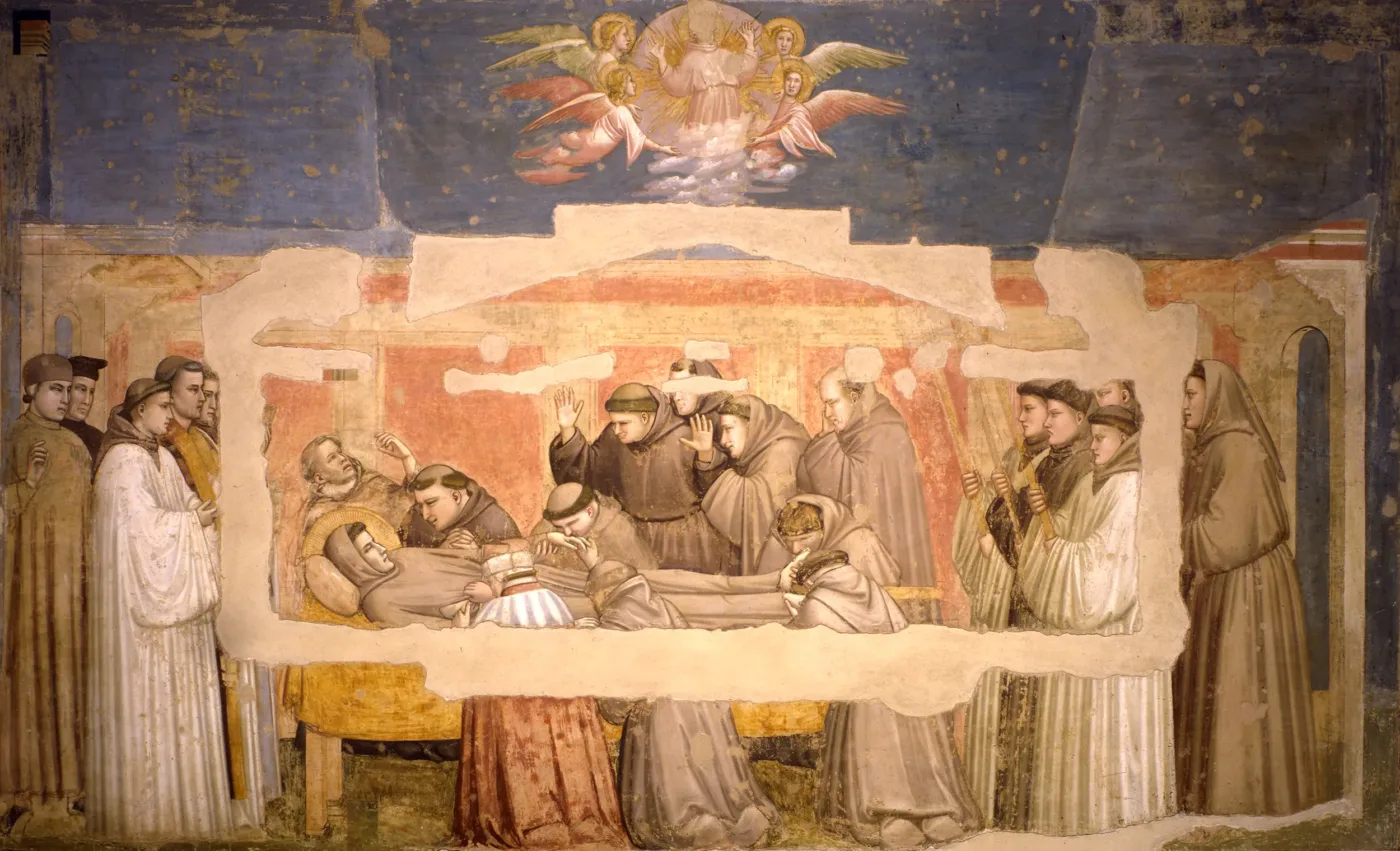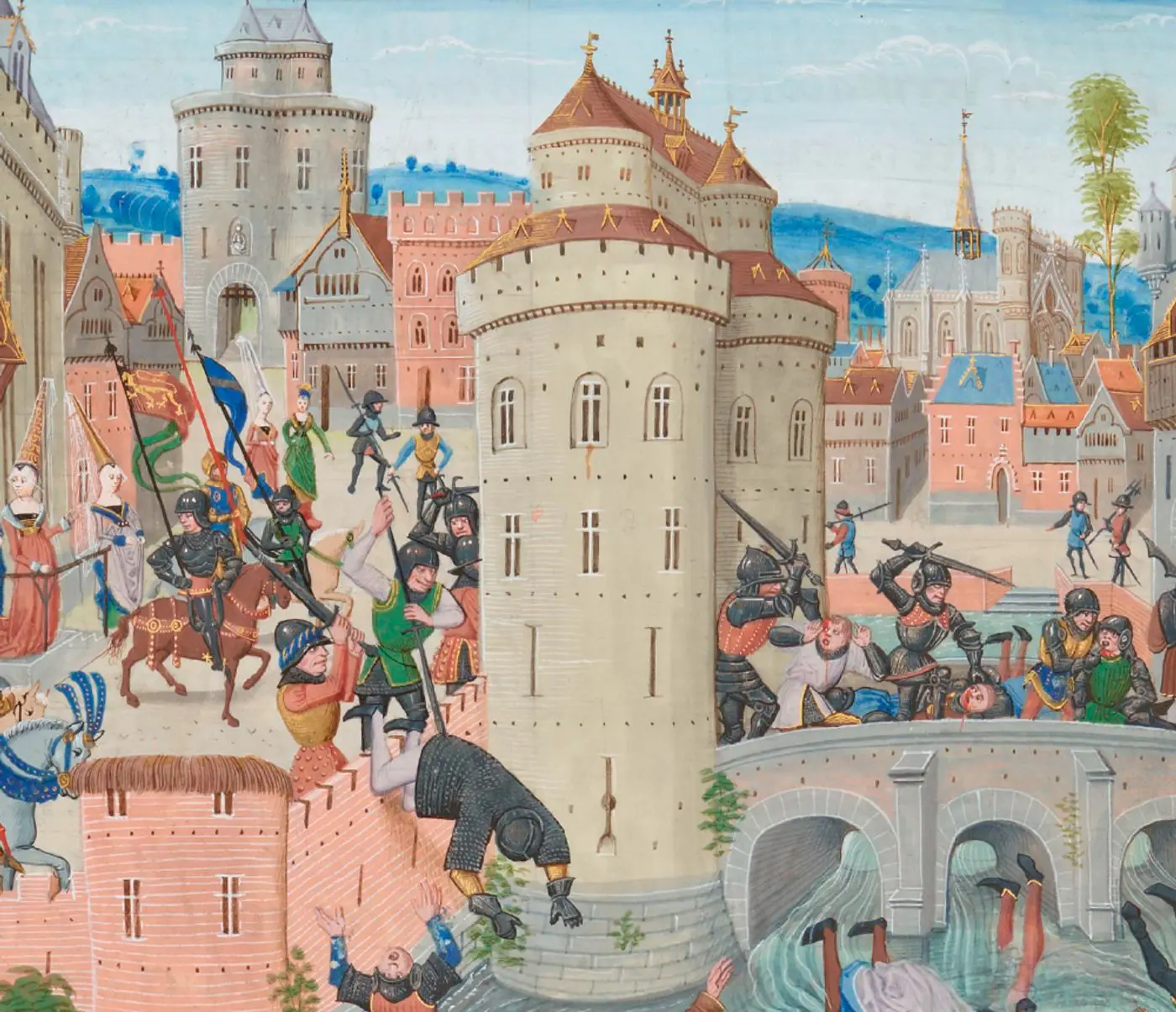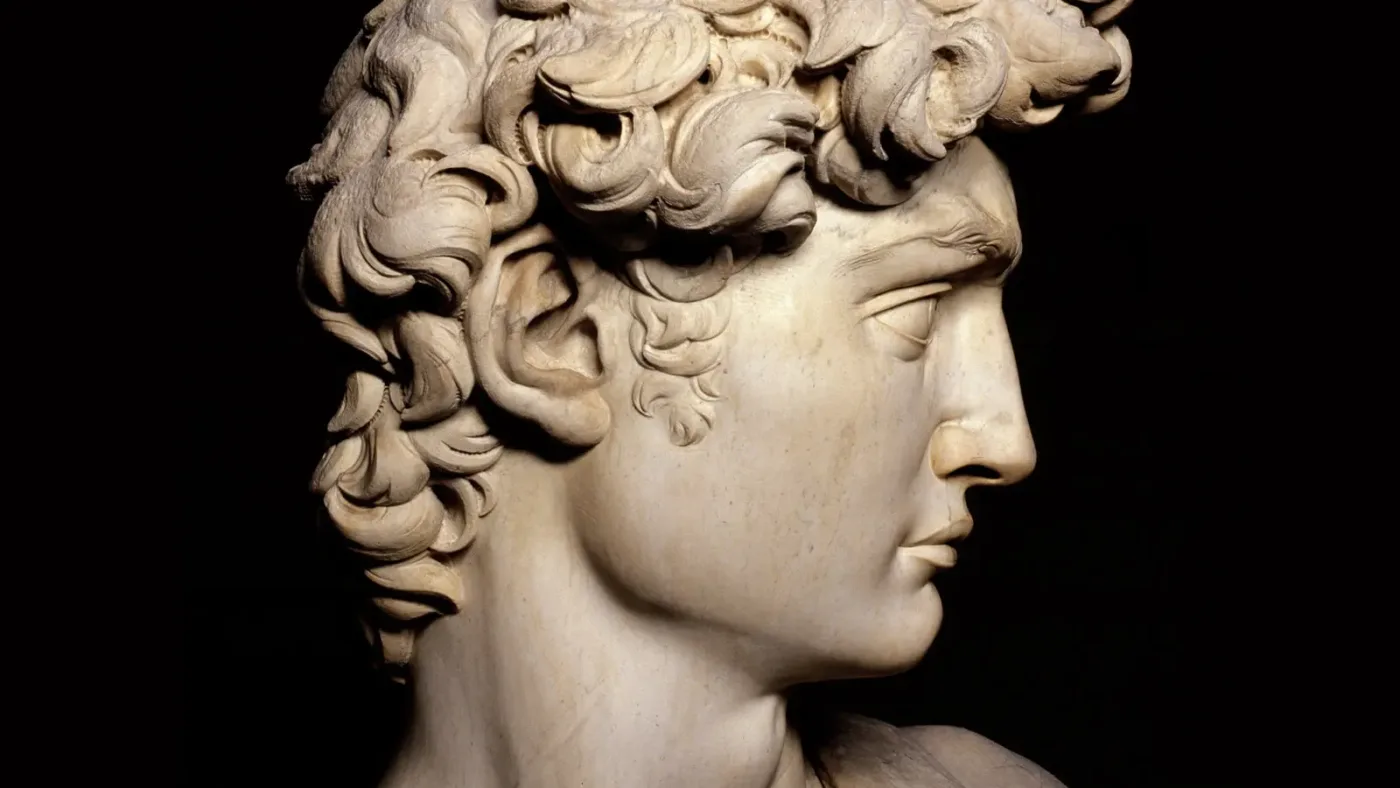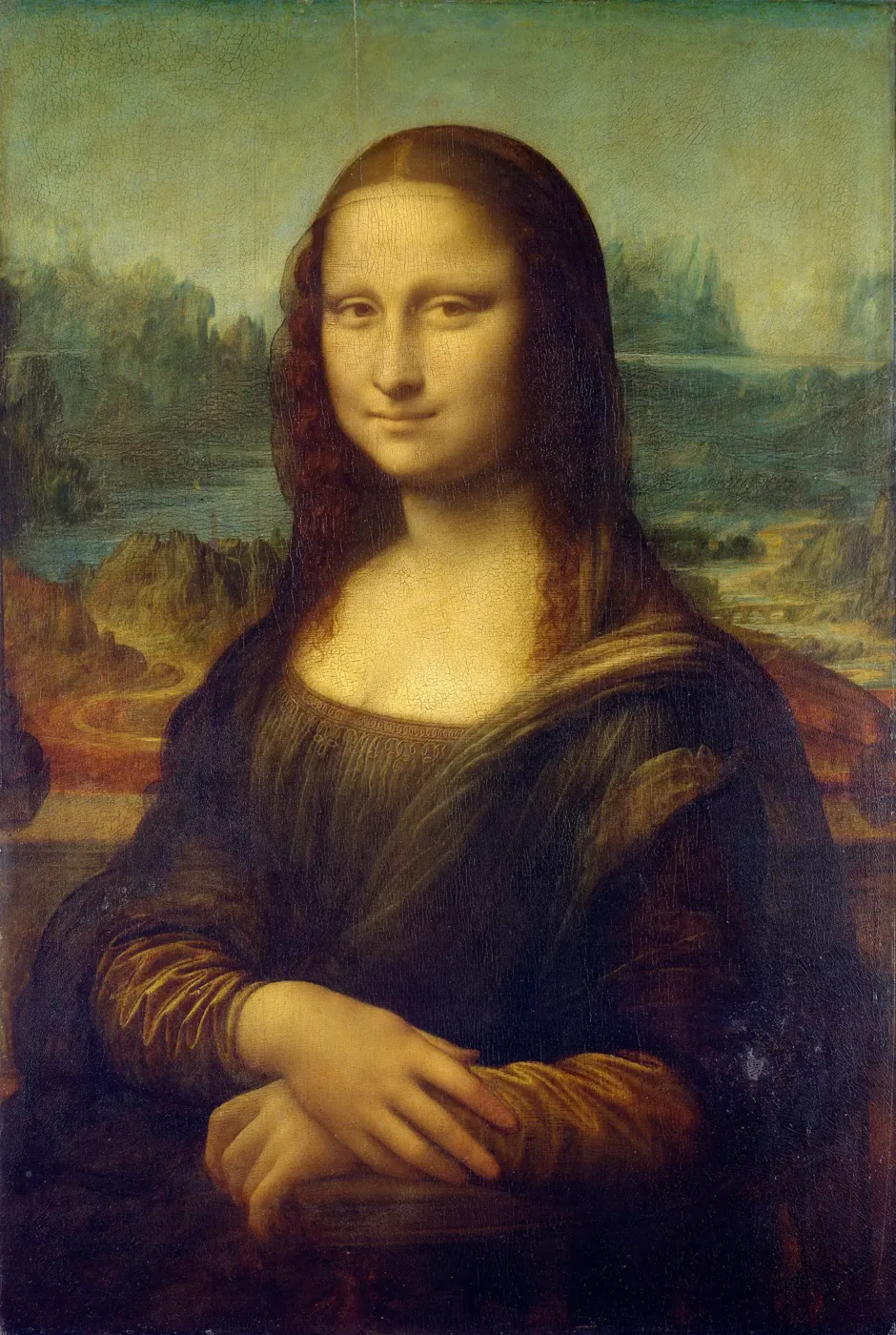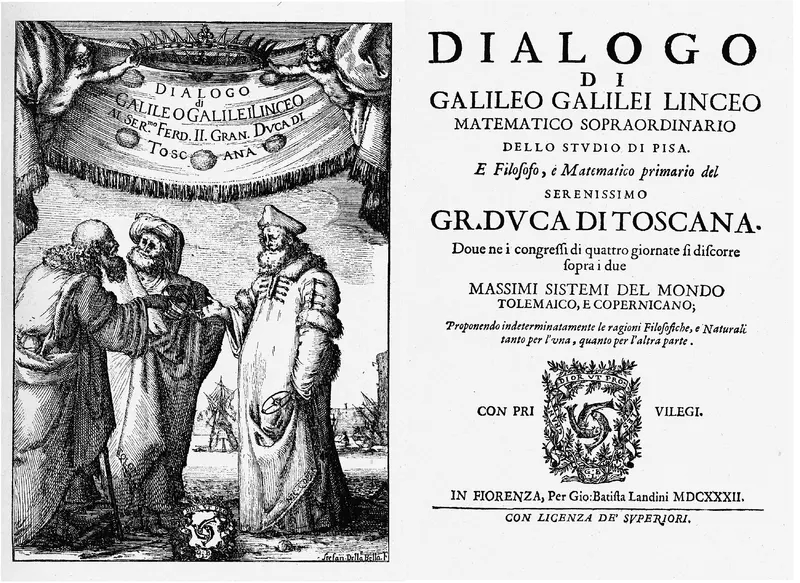Between the 7th and 6th centuries BC, the Etruscans must have discovered and used the easy ford of the Arno River at the confluence where the plain was also narrower due to the proximity of the hills to the north and south. At that point they had probably built a footbridge or a ferry service, which must have been located about ten meters from the current Ponte Vecchio in Florence, in the narrowest ford. The Etruscans, however, preferred not to found cities on the plain for defense reasons (from foreign armies and floods) and settled about six kilometers from the ford on a hill, where the fortified center of Vipsul, today’s Fiesole, was born.
Florence was established by Julius Caesar as a settlement for retired Roman soldiers, known as veterans. The official name of the city was Florentia, meaning “flourishing” or “prosperous” in Latin. The city was dedicated to the god of war Mars, and strategically located in the fertile Arno River valley, serving as a key military outpost and trade hub. Its position along the Via Cassia, a major Roman road, facilitated connections between Rome and the northern provinces.
Florentia was built in the typical Roman style, with a grid plan centered around a forum (main square), temples, baths, and an amphitheater. The city was surrounded by walls for protection.
During the persecution of Christians by Emperor Decius, the beheading of the first martyr took place: Saint Miniato, a cephalophore saint because he picked up his head and walked towards the hill where the basilica (1018) dedicated to him stands today.
The first pater patriae, Bishop Saint Zanobi, encouraged the resistance of the Florentines against the invasion of the Ostrogoths of Radagaisus, who besieged the city but were providentially defeated by the arrival of Stilicho, the great general of the Emperor Honorius. On the day of victory (according to tradition) Saint Reparata of Caesarea of Palestine was remembered and for this reason it was decided to dedicate a parish church to the north as a sign of gratitude, the Church of Santa Reparata which a few centuries later became the cathedral in place of the already existing Baptistery of San Giovanni, then simply a church, often indicated as the oldest building in Florence that has maintained its original structure.
Thanks to the victory, the entire population was definitively converted to Christianity and the ancient patron, the God Mars, was gradually replaced by Saint John the Baptist.
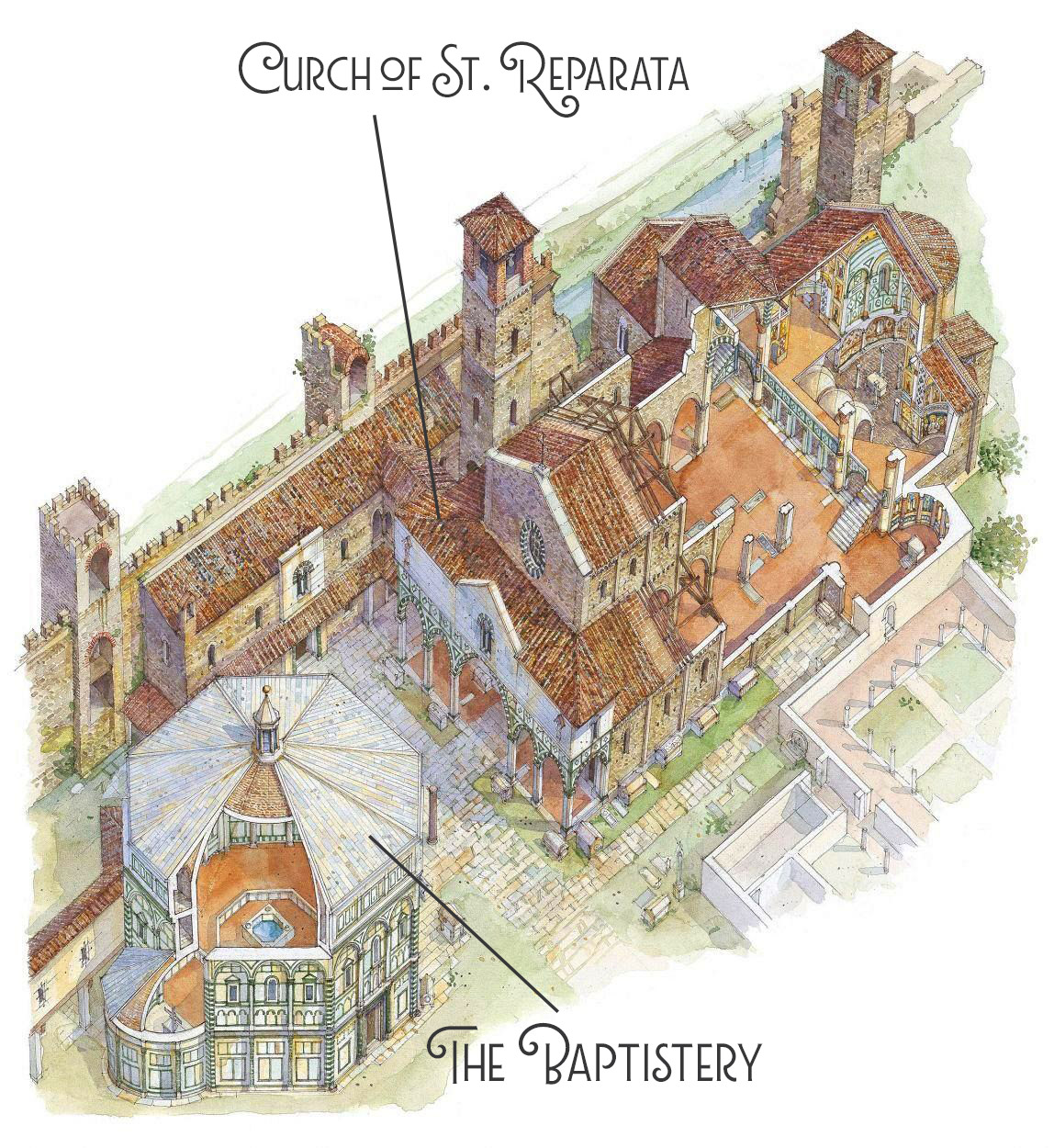
After the fall of the Roman Empire (476) Florence was conquered by multiple armies:
- the Byzantines of Belisarius (541)
- the Ostrogoths of Totila (550)
- the Goths of Theodoric (552)
- the Lombards (570)
- the Carolingians of the emperor Lothair (822)
In 1076 Matilda of Canossa, who had already reigned alongside her mother, became at the age of 30 the sole undisputed sovereign of all the lands ranging from Corneto (now Tarquinia) to Lake Garda. In Florence, the clashes between the Patarine heretics and the clergy were contained as long as the Countess was alive.
In 1138 Florence became an autonomous Municipality, governed by a republican system based on the Arts and Corporations, the powerful associations of merchants and artisans. The city became rich thanks to trade and the textile industry, in particular with the processing of wool. However, the period was also marked by the struggles between the Guelphs (favorable to the Pope) and the Ghibellines (favorable to the Emperor), culminating in the definitive victory of the Guelphs at the end of the 13th century.
Florentine merchants were already beginning to enter the European trade circuit. Semi-finished cloths arrived from Flanders and France and alum for dyeing from the Levant: with these the Florentines refined and dyed the fabrics until they transformed them into precious fabrics that they resold abroad at significantly increased prices. Also starting at that time were the first banking activities that guaranteed large profits, although with some risks, not least that of accusations of usury by the Church.
Within the urban circle, the conflict between the dying feudal tradition and the new mercantile, manufacturing and banking bourgeoisie was becoming more acute, cultural rather than military in nature. The city buildings themselves, now characterized by very high towers (in reality, real city fortifications) documented a state of perpetual struggle. This is the Florence of the ancient circle of Cacciaguida, remembered by Dante.
In 1255 the Palazzo del Popolo, later called the Bargello, was built. The demolition of the nobles’ towers, the lowering of their height, dates back to those years, a measure of both public order and symbolic and moral.
The decade of the Primo Popolo saw the extraordinary flourishing of economic activities, also supported by its own gold currency, the florin: introduced in 1252, it was the first gold coin in Western Europe, thanks to its value both in weight and in alloy that remained extraordinarily constant (San Giovanni ‘un vuole inganni is a Florentine proverb that says how the effigy of Saint John the Baptist on the florin was a guarantee of quality), ensuring an extraordinary diffusion throughout Europe and the Mediterranean basin, as a currency for important economic transactions, large payments and international loans.
Dante wrote the Divine Comedy between 1308 and 1321 (the year of his death), but the otherworldly journey described takes place on March 25, 1300, when the poet, lost in the “dark forest”, embarks on the journey through Hell, Purgatory and Paradise, guided first by his master Virgil and then by Beatrice, the woman he loved madly in life.
According to tradition, the last thirteen cantos of Paradise were found by Dante’s son, Jacopo Alighieri, after the poet’s death in 1321. It was thanks to a dream that Dante revealed to his son the place where the missing cantos were: a hidden wall in his house in Ravenna.
Giotto creates the famous cycle of frescoes dedicated to the saint in the Bardi Chapel. The scenes show the maximum evolution of Giotto’s pictorial language, with solid figures, intuitive perspective and a deep emotional expression. The innovative use of light and space makes them particularly realistic and dramatic. In the death of Saint Francis the saint is surrounded by his brothers as he leaves earthly life. This work is one of the greatest masterpieces of Italian Gothic painting and a fundamental point of reference for the development of Renaissance art.
The legend is linked to the origins of Florence and its destiny. The statue, which represented the Roman god of war, was located near the Ponte Vecchio, and was considered a protective symbol of the city.
In 1333, Florence was hit by a devastating flood of the Arno, which destroyed the Ponte Vecchio and caused the statue of Mars to collapse, detaching its head. It is said that from that moment on, the god would take revenge, depriving the city of his protection.
This belief was confirmed by subsequent events:
- in 1348 the Black Death
- in 1378 there was the revolt of the Ciompi (salaried workers of the Wool Guild)
- in 1494 the Medici dominion was overthrown by Savonarola
Some saw in these events the consequence of the “curse of Mars”.
The Renaissance was a cultural revolution that radically changed the way of seeing the universe by placing the human being at its center. Through perspective in art, the discovery of the laws of nature, humanism, the new role of women alongside men, the parameters of life were completely redefined. The modern era also derives largely from that extraordinary period.
- Dante Alighieri: the Divine Comedy, 1321
- Giotto: Stories of St. Francis, 1325
- Giovanni Boccaccio: Decameron, 1353
- Petrarch: Canzoniere, 1374
- Donatello: the David, 1440
- Michelangelo: Sistine Chapel frescoes, 1483 and the David, 1501-1504
- Sandro Botticelli: the Birth of Venus, 1485
- Leonardo da Vinci: Monna Lisa, 1506
- Raphael: the School of Athens, 1509
- Ludovico Ariosto: Orlando furioso, 1516 furiosoatlas.com
- Niccolò Machiavelli: the Prince, 1532
- François Rabelais: Pantagruel and Gargantua, 1532-1534
- Copernicus: On the revolution of heavenly spheres, 1543
- Torquato Tasso: Jerusalem Delivered, 1581
- William Shakespeare: Hamlet, 1599
- Caravaggio: the Sacrifice of Isaac, 1603
- Miguel de Cervantes: Don Quixote, 1605-1615
- Johannes Kepler: the 3 laws of planetary motion, 1609-1619
- Galileo Galilei: Dialogue Concerning the Two Chief World Systems, 1632
David is often interpreted as depicting the biblical hero before his battle with Goliath, capturing a moment of intense focus and determination. However, some art historians argue that the statue represents David after the battle, with a more contemplative expression.
The ambiguity of his expression—whether it reflects calm confidence, tension, or introspection—has sparked debate for centuries.
The block of Carrara marble used to create David was known as “the Giant” (Il Gigante). It had been quarried decades earlier and had been partially worked on by other sculptors, including Agostino di Duccio and Antonio Rossellino, who abandoned it due to its imperfections.
Michelangelo took on the challenge of transforming this flawed, neglected block into a masterpiece. How he visualized and executed such a perfect form from a damaged piece of marble remains a testament to his genius.
The Mona Lisa, painted by Leonardo da Vinci, is arguably the most famous and enigmatic artwork in the world. Its allure lies not only in its artistic mastery but also in the many mysteries surrounding the painting. Here are some of the most intriguing mysteries and lesser-known facts about the Mona Lisa.
The most enduring mystery is the identity of the woman in the painting. The traditional belief is that she is Lisa Gherardini, the wife of Florentine merchant Francesco del Giocondo, which is why the painting is also known as La Gioconda.
Another hypothesis, perhaps more likely, identifies the woman in the painting with the secret lover of Giuliano de’ Medici, Pacifica Brandani a mature woman as she appears in Leonardo’s work and not the fifteen-year-old Lisa Gherardini…
The Mona Lisa’s smile is one of the most debated aspects of the painting. It appears to change depending on the viewer’s perspective and the angle from which it is seen, a phenomenon known as the “uncatchable smile.”
Leonardo was fascinated by optics and human perception, and some believe he incorporated optical illusions into the Mona Lisa.
The smile appears to change when viewed from different angles or distances. The background landscape seems to shift and recede, creating a sense of depth and movement.
Galileo aimed to demonstrate that the Copernican system was not just a mathematical hypothesis but a physical reality. He sought to challenge the Aristotelian worldview that had dominated European thought for centuries.
The Dialogue had a profound impact on the development of modern science. It helped to shift the paradigm from a geocentric to a heliocentric understanding of the universe and demonstrated the power of empirical evidence and reasoned argument.

